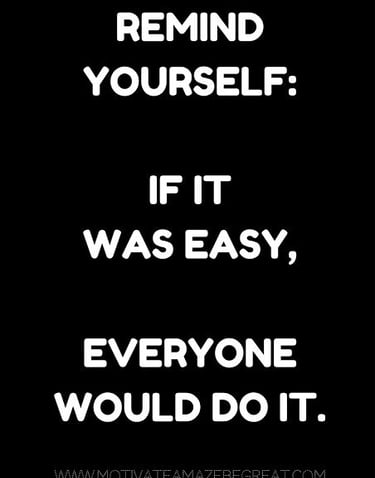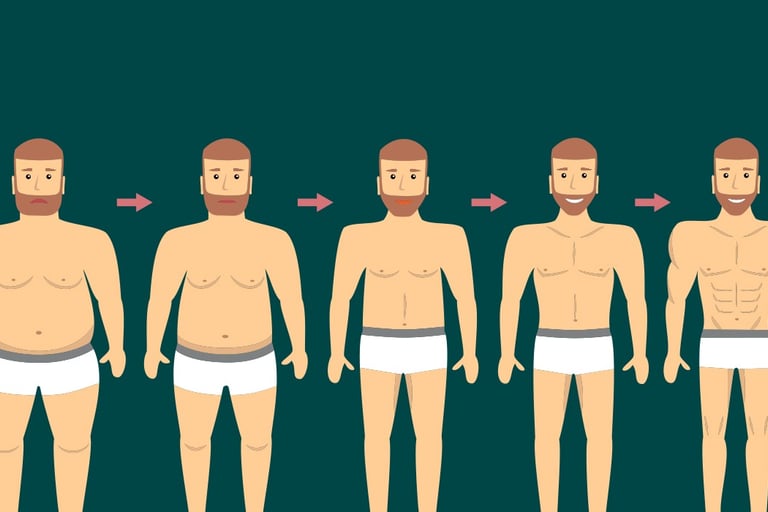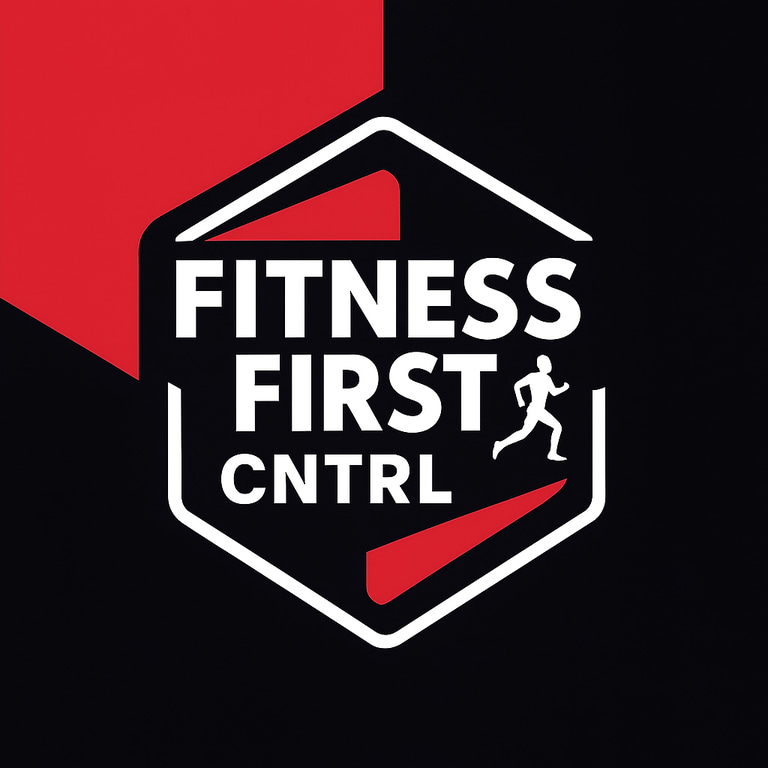USE CODE "fitnow" FOR 30% OFF your first purchase
How to Stay Consistent with Weight Loss (Even When Motivation Fails)
Why does motivation always abandon you on day 3 of your diet? This science-based guide reveals how to stay consistent with weight loss using simple tracking systems and psychological tricks that actually work.
WEIGHT LOSS
7/22/20257 min read


Sarah sits on her couch at 6:30 AM, staring at her running shoes by the door. It's Monday morning—again. Her alarm went off 15 minutes ago with that peppy workout playlist she'd queued up Sunday night when she was feeling unstoppable.
Now? The motivation has evaporated faster than her willpower at a birthday party.
She scrolls through her phone instead, promising herself she'll "definitely work out tomorrow." Sound familiar?
If you've ever felt like motivation is the most unreliable friend in your weight loss journey, you're not imagining things. Research shows that motivation naturally fluctuates every 3-4 days, which explains why Monday Sarah feels like a different person than Thursday Sarah.
The problem isn't your willpower. The problem is that most people are building their entire weight loss strategy on something that's scientifically designed to fail them.
Why Motivation Always Abandons You (And That's Actually Good News)
The Motivation Myth That's Sabotaging Your Progress
Here's what the fitness industry won't tell you: motivation is supposed to be temporary.
Neuroscientist Dr. Robert Sapolsky's research reveals that our brains are wired to conserve energy. When you rely purely on motivation, you're essentially asking your brain to work overtime indefinitely—which it will refuse to do.
Instead of fighting this biological reality, successful weight loss requires building what psychologists call "behavioral momentum"—systems that work even when you don't feel like it.
The Hidden Cost of Decision Fatigue
Every morning, you wake up with roughly 35,000 decisions to make. By 2 PM, your mental bandwidth is shot. This is why you can meal prep like a champion on Sunday but find yourself ordering pizza on Wednesday.
The solution isn't more willpower—it's fewer decisions.
The Psychology of Consistency: What Actually Works
Decision Anchors: Your New Best Friend
A decision anchor is a pre-made choice that removes thinking from the equation. Instead of "I'll work out when I feel motivated," you create: "I exercise for 10 minutes every day at 7 AM, regardless of mood."
The 3-2-1 Rule for Decision Anchors:
3 seconds: How long it should take to decide what to do
2 options maximum: Keep choices simple (walk or yoga, not 15 different workouts)
1 trigger: Always the same time, place, or preceding action
Visible Habit Loops That Trick Your Brain Into Compliance
Your environment shapes 45% of your daily behaviors without you realizing it. Smart weight loss isn't about fighting your environment—it's about designing it.
Visual Triggers That Work:
Workout clothes laid out the night before
Water bottle on your nightstand
Healthy snacks at eye level in the fridge
Scale placed where you'll see it (but more on tracking smartly below)
How to Use a Weight Loss Journal (Without the Boring Stuff)
Forget the generic "write down everything you ate" advice. Effective journaling for weight loss focuses on patterns, not perfection.
Trigger Journaling: The Game-Changer Method
Instead of logging every calorie, track your decision triggers:
The 3-Minute Evening Review:
Energy Level (1-10): How did you feel physically today?
Stress Triggers: What made healthy choices harder?
Win Moment: One thing you did well (even tiny victories count)
Tomorrow's Anchor: One specific decision you're pre-making for tomorrow
This type of tracking reveals the invisible patterns sabotaging your consistency.
The Weekly Pattern Map
Every Sunday, spend 5 minutes reviewing your trigger journal entries. Look for:
Which days are consistently hardest
What emotions precede poor food choices
Which environments support your goals
What time of day your willpower crashes
These insights become your strategic advantage.
Building Your Plateau-Proof System
Phase 1: The Micro-Commitment (Weeks 1-2)
Start embarrassingly small. We're talking "I'll do 5 push-ups every morning" small.
Why this works: Your brain needs proof that you can keep promises to yourself. Large commitments create large opportunities for failure and self-doubt.
Your daily fitness log for beginners should track:
Did I complete my micro-commitment? (Yes/No)
How did I feel afterward? (1-3 words max)
What made it easy or hard today?
Phase 2: Strategic Stacking (Weeks 3-4)
Once your micro-commitment feels automatic, add one more element. This is called habit stacking—attaching new behaviors to established ones.
Example Stack:
After I brush my teeth (established habit)
I will put on my workout clothes (new habit)
Then I will do my 5 push-ups (existing habit)
Phase 3: The Plateau Buster (Week 5+)
Here's where most people fail: they keep doing the same thing expecting different results.
The 80/20 Progress Rule:
80% of your routine stays exactly the same (for consistency)
20% gets a small challenge upgrade every 2 weeks
This prevents both boredom and plateau while maintaining your behavioral momentum.
Smart Tracking Tools That Actually Help
The Power of a Weight Loss Tracker
Digital apps can be overwhelming and create more decision fatigue. A printable habit tracker for fat loss offers several advantages:
Why Physical Tracking Works:
No notifications or distractions
Satisfying visual progress
Can't be deleted in a moment of frustration
Works without wifi or battery life
Essential Elements Your Tracker Should Include
Daily Sections:
Micro-commitment completion (checkbox)
Energy level (1-10 scale)
One trigger observation
Tomorrow's anchor decision
Weekly Review Space:
Pattern recognition notes
Celebration of wins (crucial for momentum)
One adjustment for next week
Monthly Progress Markers:
Photos (more reliable than scale weight)
Measurements
Non-scale victories
Habit streak tracking
Handling the Emotional Rollercoaster
The Monday Morning Reset Strategy
Remember Sarah from our opening story? Here's how she finally broke the Monday motivation cycle:
The Sunday Night Preparation Ritual:
Layout Tuesday's clothes (not Monday's—remove the pressure)
Pre-decide one small healthy choice for Monday
Write a 2-sentence note to Monday morning self
Set up one visible environmental trigger
The Monday Morning Grace Protocol:
If motivation is low: do 50% of your planned activity
If motivation is nonexistent: do 10%
If you can't do 10%: just put on workout clothes
The goal is maintaining the behavior chain, not perfect execution.
Emotional Eating Emergency Plan
When stress, boredom, or anxiety strikes, most people either resist completely (and eventually break) or give in completely. There's a third option.
The 10-Minute Rule:
Set a timer for 10 minutes
Do your trigger journaling for today
Drink a full glass of water
If you still want the food after 10 minutes, eat it mindfully
Why this works: You're not restricting the food (which creates rebellion), but you're inserting awareness into automatic behavior.
Advanced Consistency Strategies
The Minimum Viable Routine
Create a backup plan for your worst days. This prevents the "all or nothing" mentality that derails long-term progress.
Your Emergency Routine Should Include:
2-minute movement (walk to mailbox counts)
One conscious food choice
30 seconds of trigger journaling
Laying out tomorrow's clothes
Social Accountability Without the Pressure
Find one person who will check in weekly (not daily) about your consistency, not your results. The conversation should focus on:
Which systems worked this week
What environmental changes you need to make
How to adjust next week's micro-commitments
Technology That Helps (Without Taking Over)
Digital Tools for Analog Tracking
Use technology to support your physical tracking, not replace it:
Photo Progress:
Same time, same location, same lighting weekly
Focus on energy level in photos, not just appearance
Store in a dedicated album for easy comparison
Habit Reminder Systems:
One daily notification max
Focus on preparation, not performance ("Time to lay out tomorrow's clothes" vs "Time to work out")
When Apps Actually Help
Best digital tracking for:
Water intake (visual progress bars work well)
Sleep quality (hard to track manually)
Workout timing (built-in rest periods)
Avoid apps for:
Calorie counting (creates obsession over awareness)
Daily weigh-ins (too much fluctuation noise)
Social comparison features (motivation killer)
Creating Your Personal Consistency Blueprint
Week 1 Action Plan
Day 1-2: Design Phase
Choose your micro-commitment (5 minutes max)
Select your decision anchor (same time/place daily)
Set up one environmental trigger
Download your weight loss tracker PDF
Day 3-7: Implementation Phase
Execute your micro-commitment daily
Complete 3-minute evening trigger journaling
No additional changes or upgrades
Focus solely on consistency over performance
Your First Monthly Review
After 4 weeks, ask yourself these strategic questions:
System Assessment: Which parts of my routine feel automatic now?
Obstacle Analysis: What consistently derails my progress?
Environmental Audit: What physical changes would make healthy choices easier?
Emotional Pattern Recognition: When do I struggle most, and why?
Use these insights to refine your system, not overhaul it completely.
The Compound Effect of Small Wins
Why Tiny Changes Create Massive Results
A 1% improvement daily compounds to 37x better results over a year. But here's what most people miss: the compound effect works on identity, not just behaviors.
Every time you keep a small promise to yourself, you're proving that you're someone who follows through. This identity shift is what transforms temporary motivation into permanent lifestyle change.
Celebrating Progress (The Right Way)
Milestone Celebrations Should:
Focus on consistency streaks, not just weight loss
Reward the process, not just outcomes
Reinforce your new identity as someone who takes care of themselves
Examples of Process-Focused Celebrations:
New workout playlist after 2 weeks of consistency
Massage after completing your first monthly review
New journal or tracker after filling out your first one completely
Your Next Steps: From Information to Implementation
The 24-Hour Challenge
Don't wait until Monday. Don't wait until tomorrow. The next 24 hours are your testing ground.
Right Now:
Choose one micro-commitment for tomorrow
Set up one environmental trigger tonight
Write one sentence about why consistency matters to you
Tomorrow:
Complete your micro-commitment (regardless of motivation level)
Do 3-minute trigger journaling that evening
Prepare one thing for the day after
This Weekend:
Download and print your habit tracker
Plan your Sunday night preparation ritual
Schedule 10 minutes for your first weekly review
Your Consistency Toolkit
Ready to stop depending on motivation and start building unstoppable momentum?
Get Your FREE 1-Week Weight Loss Tracker:
7-day habit tracking template
"This Is Me" personal reflection page
Weekly meal planner page
Mini goal-setting page
[Click below to download your free 1-week weight loss tracker here]
This tracker is specifically designed to help you stay on track during those crucial first 7 days when building new habits. The "This Is Me" page helps you identify your personal patterns and triggers, while the meal planner and mini goals keep you focused on small, achievable wins.
Remember: You don't need more motivation. You need better systems. And every system starts with a single, small, consistent action.
The question isn't whether you'll feel motivated tomorrow morning. The question is: what will you do when you don't?
Your future self is counting on the system you build today.










